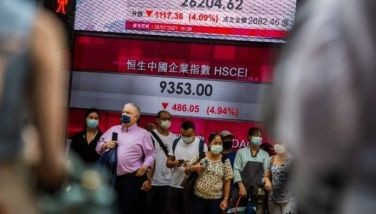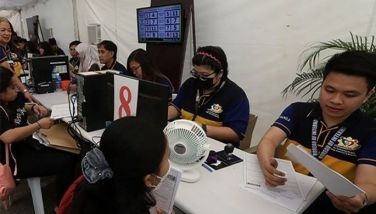A million deaths

As most of us are aware, a century ago 1918-1919 to be exact there was the infamous so-called Spanish Flu. Historians document this pandemic to have killed at least 50 million worldwide and infected about 500 million (or a third of the world population).
The horrors of the Spanish Flu can now be found only in books, similar literature or media, and official documentations, and although these seem to be far removed in severity to today’s COVID-19 pandemic, it nonetheless offers some interesting lessons – and perhaps, warnings.
This month-end, the world officially recorded surpassing its 33rd million COVID-19 case and its one-millionth death. The US, India, and Brazil combined have accounted for a third of the reported infections, and almost half of total mortalities.
These days, many countries in the northern hemisphere are entering the fall season, which many epidemiologists warn could usher in the dreaded second wave of the COVID-19 pandemic. If we are to heed the Spanish Flu’s records a century ago, the resurgence of the coronavirus infection could be more virulent.
Or perhaps, not so.
Balancing needs
While the worst may seem not over yet, the good news is that most parts of the world now seem to have a better handle at reckoning with a second wave, not just in keeping the virus spread more controlled, but also at balancing people’s needs to economically survive.
Come this second wave, we may see far less deaths, thanks to improved treatments; and ironically, we are likely to see less business closures because those most vulnerable have already closed shop during the first wave of quarantines and lockdowns.
It would be incorrect to say that governments a century ago were better at handling the impact of quarantines then, simply because economic and business conditions then and today are fundamentally different.
A century ago, the world was at war. This aggravated the spread of the virus since troop mobility kept border movements unfettered. People also had to go out to buy food (no online ordering), thus limiting the concept of community quarantines. The war machinery, likewise, demanded for factories to be kept open. Consequently, more people died because of the virus, but the world economy continued to grind.
Today, consumerism is king. The world economy depends on people traveling, dining out, buying non-essential goods – all of which account for a big chunk of modern day spending. Much of these have been curtailed by the coronavirus lockdowns, and while effective in keeping down the death toll, the economic consequences have been so much more.
Future-proofing
We should listen when world thinkers say that humanity needs to prepare for the next pandemic, which may come sooner than in a hundred years. This will be crucial in saving lives, and more importantly, livelihoods.
Then again, another pandemic may not be the next global disruptor if we could tune in to what the environment and environmentalists are telling us. While environmental destruction may cost less lives than a pandemic, the billions of dollars of lost property may become the next threat to the global economy.
The climate debates seem to be figuring more prominently in many government discussions than it was five years ago, as reports of increasing weather and natural calamity disruptions on civilizations are becoming more apparent and distressing.
These are twin threats that should force the world to seriously consider future-proofing humanity’s continued and comparatively safe existence. While advances in artificial intelligence and automation provide an answer to future pandemics, the need for a global consensus in confronting environmental changes would be more challenging.
The Philippines, then and now
In parting, here are some interesting snippets from Francis A. Gealogo’s “The Philippines in the World of the Influenza Pandemic of 1918-1919” published in the Philippine Studies, vol. 57, no. 2, 2009, pp. 261–292 and digitally made available by JSTOR at www.jstor.org/stable/42634010.
“The social and political conditions in the American-occupied Philippines, however, made the Philippine experience historically unique. In the middle of the outbreak, public health authorities in the country had to deal with the transfer of authority from an American-dominated health bureaucracy to a Filipinized one. This happened with the attendant political intrigues that accompanied the transfer of authority from one that was dominated by the colonial power to one that was local in composition.
“There was also the absence of a serious effort at containment of the epidemic and the segregation of the population outside the established special cantonment zone. The special cantonment zone, as a matter of fact, may be viewed more as a means to protect the possible Filipino draftees who were about to take part in the First World War than protect the local population and contain the spread of influenza to other localities. These conditions rendered unnecessary the possibility of having ‘escape populations’ and to establish a quarantine system as authorities simply let the spread of the virus take its natural course to reach previously uninfected areas.”
Some 70,000 to 90,000 deaths were recorded from the 1918-1919 pandemic in the Philippines; today, the country’s coronavirus death toll stands at just over 5,000. The economic devastation a century ago was not discussed. In contrast, trillions of pesos have already been lost due to the coronavirus lockdowns, with the Philippine economy shrinking by more than 16.5 percent during the second quarter.
Facebook and Twitter
We are actively using two social networking websites to reach out more often and even interact with and engage our readers, friends and colleagues in the various areas of interest that I tackle in my column. Please like us on www.facebook.com/ReyGamboa and follow us on www.twitter.com/ReyGamboa.
Should you wish to share any insights, write me at Link Edge, 25th Floor, 139 Corporate Center, Valero Street, Salcedo Village, 1227 Makati City. Or e-mail me at [email protected]. For a compilation of previous articles, visit www.BizlinksPhilippines.net.
- Latest
- Trending































